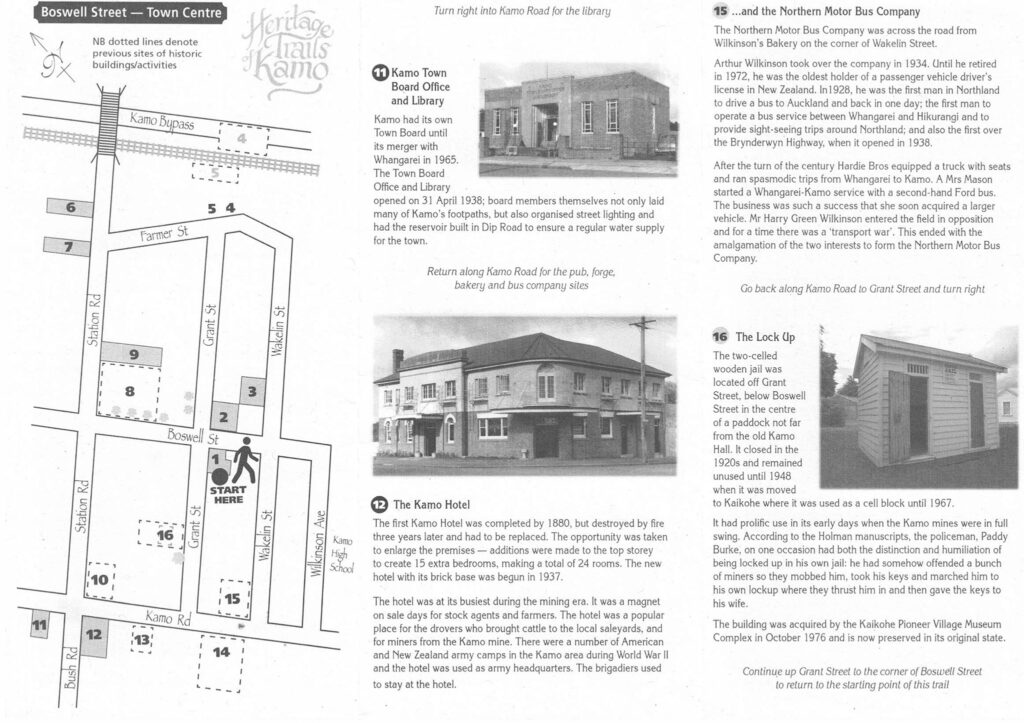KAMO HERITAGE TRAIL
Boswell Street Trail – Town Centre
Click to view full size brochure in a new window
The Wider Kamo Area
View the Wider Kamo Area Trail on https://whangareionline.co.nz/attractions/heritage-trail-wider-kamo
In February 1858, a block of land called Kamo, consisting of 296 acres, was purchased from Ngapuhi, on behalf of the Crown. Containing rich volcanic soil the fertile wooded plain was surrounded by bush covered hills.
Nestled in the shadow of Mt Parakiori the
story of Kamo Village starts in 1859 when Alexander Meldrum and William Carruth were granted land by the Government. Carruth settled the western block and Meldrum the eastern block on which coal was discovered in 1875 (whilst the Government was excavating to form a road north), bringing growth to Kamo. Shops, houses and roading were constructed to keep pace with Kamo’s needs.
Early business consisted of:
• Hotel built in 1880 which burnt down in 1883 and replaced later that year. It burnt down again in 1936 and in January 1937 a brick based building was constructed, which still stands today
• Bakery built in 1883 – bought in 1906 by Harry Wilkinson which began a succession of 4 generations.
• Blacksmith’s forge established in the early 1870s
• Butchers in the 1880s
• Boot and shoemakers in 1892
Mineral springs reputedly discovered in 1857 were opened to the public in 1894 when the baths were built. In the early 1900s came a hotel and sanatorium which was replaced by a motor camp and motels after the hotel was destroyed by fire.
Following the arrival of other settlers in and around the Kamo area, a school was established in 1873; Kamo’s first church was built a few years later in 1881 and the railway followed in 1878 to cart coal to the wharf at Whangarei.
In 1914 Kamo Brick & Tile opened and worked until Ceramco stopped production in 1988. It is now the current site for Greenfingers.
Electricity arrived in 1922
Following the final closure of the mine in 1955, Kamo continued to progress and in 1965 was amalgamated with Whangarei City. When State Highway 1 was re-routed to bypass Kamo an opportunity came for design improvement and today there is a busy shopping centre which still retains a village atmosphere.
Kamo Village is committed to a future development programme which includes newly created park spaces, summery streetscapes, a cycle way and a heritage trail. We cordially invite you to come and see for yourself all that makes our community so amazing.


